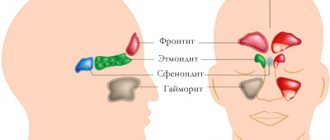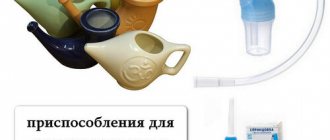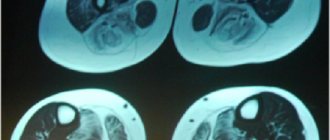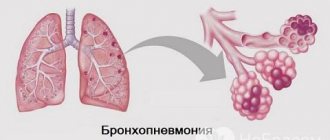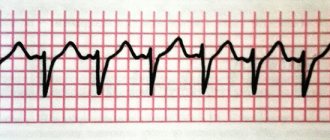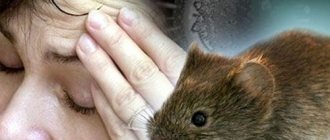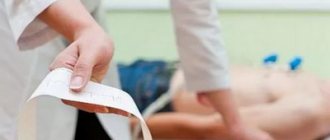Treatment in adults
When the patient feels better after conservative therapy, it is advisable to repeat it with each exacerbation, without surgical intervention.
Using special devices
In the photo there is an ultrasonic device
You can eliminate unpleasant symptoms using special ultrasound devices. This includes Vitafor. It has a vibroacoustic effect on the affected area. Fairy and Atmos Antirunny nose are used less frequently.
When you have a runny nose, it is effective to use a Nebulizer. It is necessary to carry out therapeutic measures with the help of these instruments only in accordance with the instructions that are attached to them. For example, to treat nasal congestion, Vitafon should be applied to the sinuses in mode 2 for 10 minutes.
The photo shows a nebulizer for the nose of an adult
Folk remedies
Swelling caused by an uneven plate can be relieved with a healing massage. For these purposes, you need to prepare a cream based on propolis. Apply it to the cheek area, which is close to the nose. Rub the cream into the skin and touch the sinus area, repeating circular movements. It is better to perform all these actions before going to bed.
In the photo - nose massage
You can relieve the unpleasant symptoms of an uneven septum with the help of an exercise such as “blow-spit”. For these purposes, you need to use purified water, in which you stir a pinch of sea salt.
Why mucus accumulates in a child’s nasopharynx, and what medications will help with this problem, is described in great detail in this article.
But how to remove mucus from the nasopharynx, and what can be done about this problem, is described in great detail in this article.
It will also be interesting to know why the nose is dry and crusty:
Maybe
Symptoms of a deviated nasal septum
Many people live with a deviated septum, not attaching much importance to it, because the symptoms may not appear at all for a long time, and when they do appear, they become the norm of life.
One of these “unnoticeable” symptoms is breathing problems.
The nose performs an important function as a “filter” of various microbes and suspensions. In addition, passing through the nasal cavity, the air is moistened and warmed. When breathing through the nose is difficult, a person begins to breathe partially through the mouth. The body, in this case, receives less oxygen in a different quality, which leads to deterioration in the functioning of organs, increased fatigue and headaches.
With a deviated septum, many often suffer from chronic runny nose and nasal congestion. Also, snoring and frequent inflammatory reactions of the respiratory system, such as sinusitis and sinusitis, often become a symptom.
Treatment in children
Surgical treatment can be used to correct uneven preparation in children only if they are already 16 years old. Otherwise, perform the operation only as a last resort. This is due to the fact that until the age of 16, the development of the plate occurs, so that it is able to level itself. When your baby is sick all the time, you can first try to use non-surgical methods, and as a last resort, use surgical interventions.
At home, you can use vasoconstrictor drops, antibacterial drugs, rinsing solution and sprays. But all these capable therapies bring only temporary relief. To completely stop the problem, you need to understand and eliminate the cause of its development.
In childhood, a septum can be corrected using a non-surgical method such as laser septoplasty. But it is advisable to use it in cases where the deformation is minor and affects only cartilage tissue.
Video shows a deviated nasal septum without surgery:
Osteopathy remains no less popular. This is a non-surgical method of therapy, which is characterized by a painless external effect on cartilage tissue; this technique should also be applied to a slightly infected defect. But the doctor will be able to select the final method of therapy, taking into account the patient’s health, the degree of deformity and the patient’s age.
Laser treatment method
This procedure is one of the most popular today in the treatment of uneven nasal septum. To perform this, you need to use local anesthesia. The operation lasts from 30 minutes to 1.5 hours. The entire manipulation is carried out under the control of a video camera, thanks to which it is possible to recognize precise microscopic cuts.
Using laser treatment, it is possible to minimize bleeding and disinfection. During laser treatment, mucosal separation occurs in the area of the plate.
Using special instruments, the affected cartilage tissue and the bone part of the plate are removed. They are straightened in a special way and installed in place. After this, stitches can be placed.
Video treatment of a deviated nasal septum with a laser:
The benefits of laser treatment include:
- The procedure can be performed on an outpatient basis;
- occurs practically without blood;
- required local anesthesia;
- There is no point in using dense, tight tampons during rehabilitation.
Photo: Laser treatment of a deviated nasal septum
In addition to positive factors, there are a number of disadvantages, which include:
- Only cartilage tissue can be softened by laser radiation . But the nasal plate consists of a combination of cartilage and bone tissue. Until now, it has never been possible to encounter just one curvature of a cartilaginous area.
- The laser treatment technique has not yet been fully studied, so it is not always clear how the tissue will react to the powerful thermal influence in the future.
- Not everyone can afford laser treatment today. This is due to the high cost of therapy. The average price of such therapy reaches 0 rubles.
But how chronic tonsillitis is treated during pregnancy, and which remedy is the best, is described in great detail in this article.
Why ear congestion occurs without pain after a cold, and what you can do with your own hands at home to solve this problem.
It will also be interesting to learn about where to apply the star when you have a cold, and how you can choose it correctly.
This article will help you understand which nasal spray for allergic rhinitis should be used and applied, and how to choose it correctly.
Description of the disease
A crooked plate in the nose is the result of improper development of the facial bones or injury. An uneven septum may contain bone or cartilage seals that have the shape of a spike or ridge.
Pathology can be recognized by characteristic signs:
- It is difficult to breathe through the nose because it is blocked.
- The formation of chronic inflammation of the auditory tube and tympanic cavity.
- Since an uneven plate does not allow mucus to drain normally, this can lead to the development of sinusitis.
- The seals present on the septum, when in contact with the sink, lead to the development of involuntary neuroses.
In the photo - deviated nasal septum code according to ICD 10
If the curvature of the plate is diagnosed in children at an early age, then this is reflected in their appearance: a slightly open mouth, pale skin and an aesthetic complexion. But you need to understand that the growth of the nasal septum continues throughout life.
Since its design is made up of several parts, the growth of which occurs at different rates, with age, problems associated with its unevenness may become more pronounced.
Today it is very rare to find a perfectly straight nasal plate in an adult. This is due to numerous factors, among which trauma occupies a special place. More precisely, there are no perfectly even plates. For every person it is curved, it just differs in the degree of curvature and the presence of ridges or spines.
Reviews
- Maria, 34 years old: “I knew about my diagnosis – a deviated septum – since I was 20 years old. But this pathology did not particularly bother me until a certain point. But about 3 years ago I began to notice that one of my nasal passages was completely clogged, I had to use vasoconstrictor drops. But then my headaches became more frequent, I began to feel overwhelmed and tired. I went to the hospital, where they offered me laser treatment. I was not particularly familiar with this technique, but the result pleasantly surprised me. I didn’t even think that a problem that had been bothering me for years could be solved so quickly. The rehabilitation period was short, but after that I finally felt relief.”
- Kirill, 35 years old: “A couple of years ago I began to notice symptoms such as headaches, nasal congestion, I always had colds, although before that they did not affect me so often. I decided not to delay this and ask for help. I was diagnosed with a deviated septum and prescribed laser treatment. The procedure lasted only 40 minutes, after which I went home. Within 7 days my stitches were removed. After that, my condition improved and no complications arose.”
- Anna, 26 years old: “I was diagnosed with a deviated nasal septum at the age of 10. But my mother did not dare to undergo the operation, since we hoped that the plate would align. But the miracle did not happen, and after 16 years I was forced to undergo a laser procedure to straighten the plate. I want to say right away that this method is the most effective, and the risk of complications after treatment is minimal. The only drawback that I noted was the high cost.”
If you have a deviated nasal septum, it is impossible to completely cure this disease without surgery. At home, you can use a number of effective techniques that will simply alleviate the patient’s condition, but not fight the problem. Of course, you can try laser treatment, but despite its effectiveness, this method of therapy does not always resolve the problem and a relapse is observed.
Functions of the nasal septum
The main function is the anatomical division of the nasal cavity, which increases the area of interaction of the mucous membrane with the inhaled air, reduces turbulence (movement, like a vortex) when it penetrates the lower respiratory tract.
If there is a deviated septum, then all functions of the nasal cavity will be impaired. But the pathology will not reveal itself immediately; it will take some time for more unpleasant symptoms to appear.
For example, at first, insufficient air penetrates into the lungs, which can cause daytime drowsiness, heart problems, and decreased performance. Then the likelihood of breathing through the mouth increases, and the air in the mouth cannot be warmed and purified, so it enters the lungs cold and saturated with allergens and pathogenic bacteria. This increases the risk of bronchitis, pneumonia and other bronchopulmonary pathologies, the root cause of which was dysfunction of the nasal septum.

